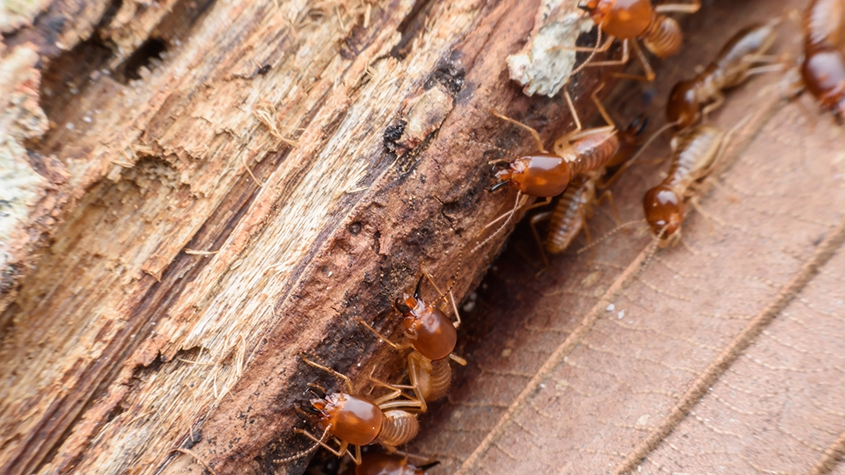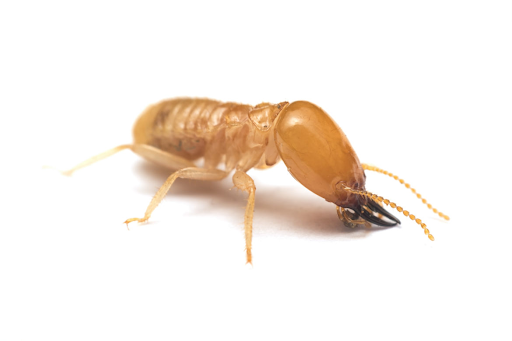Every year, pesky termites make nests in homes across Missouri, causing millions (if not billions) of dollars worth of damage. A termite infestation can cause an expensive headache, especially when it comes to treating them and protecting your property.
Do I Have Termites?
The first step towards preventing and treating termites is figuring out if you have a problem in the first place. You’ll rarely see a single termite wandering your home; they won’t come out of their underground home unless they’re swarming. Often, homeowners don’t know that there is a termite infestation before irreversible damage has been done.
Here are some other signs of termites:
- Clicking: Termites are noisy eaters. Soldiers do all of the work, and they signal the other termites when there is danger by banging their heads or shaking their bodies. If there’s an unexplained clicking sound from your walls, it could be termites.
- Swarmers: Alates are flying termites that have left the nest to mate and establish new colonies, which will most likely be in another area of your home. They meet a partner, shed their wings, and then crawl up into a newly created nest, reproducing for up to 10 years.
- Hollow-sounding wood: Termites eat dry wood from the inside out, often leaving a thin layer behind on the outside of the wood. Thumping can produce a hollow sound or a papery feel, and wood may crack without the extra support.
- Gaps in windows or doors: It’s not just damp weather. Doors or windows that won’t close properly could be due to tunnels created by termites within the wood frames.
- Frass: Simply put, frass is termite poo. Subterranean (underground) termites use their frass to plug the tunnels created, while drywood termites push it out of the tunnels at the entrance to their nests. Frass appears as small black marks and a dark powdery substance.
How Do I Prevent Termites in My Home?
If you’re building a new construction home in the St. Louis area, there are several steps you can take to shield your investment from termites — the first being in-wall services. Also known as an in-home tubing system, the in-wall pest management system from PestShield is the pest control system we install during the home building process.
We insert perforated tubing into a home’s walls during the construction phase. Then, the tubing is linked to outside treatment ports placed on the home’s exterior walls. At the time of activation, one of our team members will come to your home to inject pesticides into these ports. The pesticide forms a strong barrier that keeps pests away. The product kills termites and other pests in the one place they love to hide – house walls!

More prevention tips to keep in mind:
- Invest in annual inspections of your home and property by pest control professionals.
- Remove access to your home by sealing up gas and water lines and reducing wood-to-ground contact that gives them a highway into your home.
- Take care of water pooling or damage ASAP in areas like your roof, crawl spaces, or plumbing.
- Inspect lumber used in your home for tunnels, check wood shingles before installing, and remove any deadwood or firewood that may look suspicious.
- Add a fresh coat of paint to any wood that’s cracking, peeling, or fading to seal out termites.
The best and easiest way to prevent termite damage in your home? Eliminate their food source! Look into wood pretreatment to act as a deterrent deep inside lumber used for new construction; this will take care of drywood termites. There’s also soil pretreatment options for areas of your property that come into direct contact with timber (think: your outdoor wooden deck or patio.)
PestShield technicians use innovative treatments that get results. With years of experience, countless homeowners and builders continue to turn to us for pest control services. We use innovative and effective methods to find and treat these pesky pests, and help to save you from thousands of dollars in home repair costs that your insurance policy probably won’t cover. Contact us today for an inspection or a free quote!

